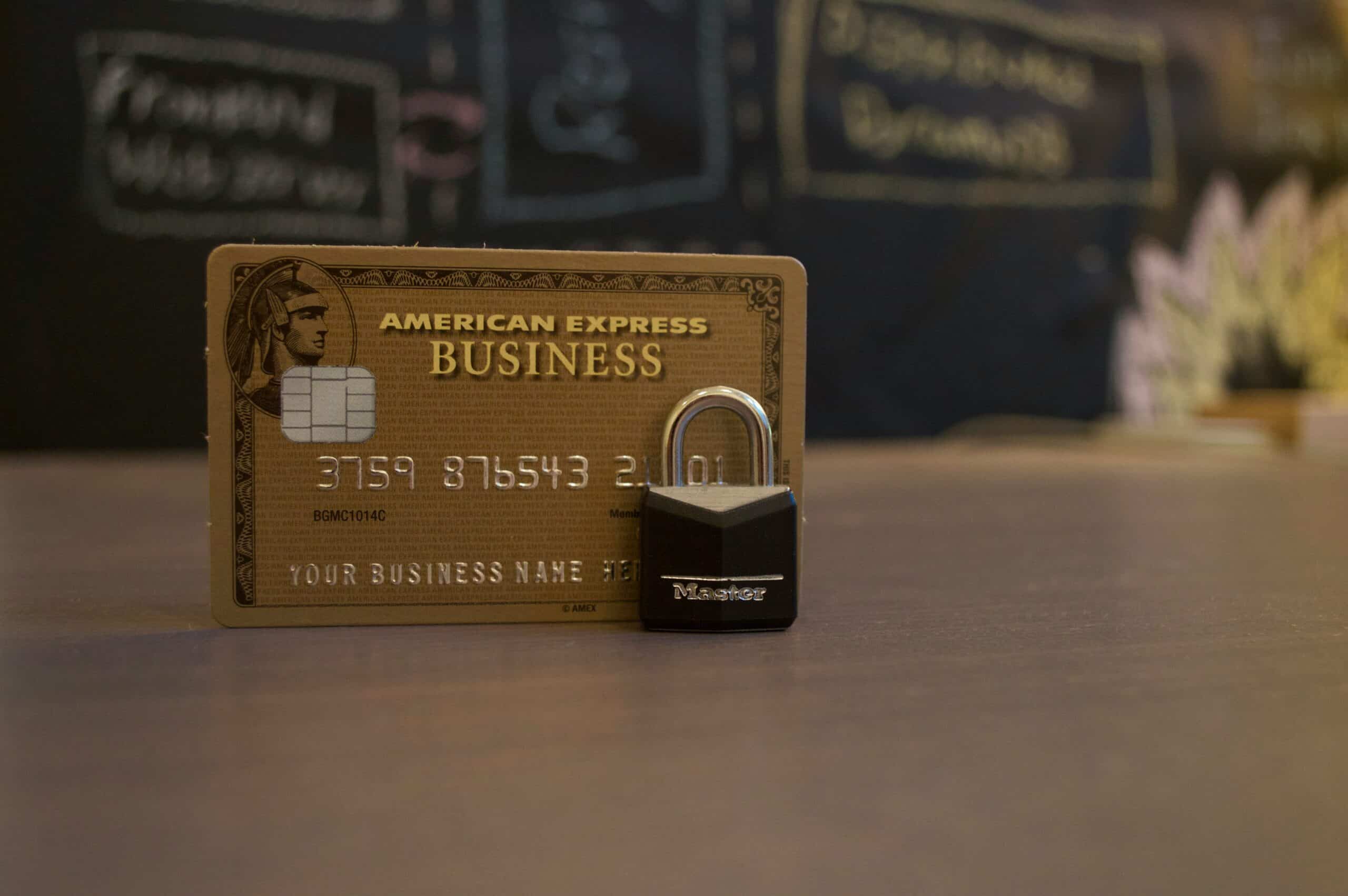Anúncios
When it comes to credit card fraud protection, a little knowledge and vigilance can go a long way. Imagine getting a notification of a purchase you never made or discovering a sudden spike in your balance. That sinking feeling? No one wants it. In this guide, you’ll learn how to safeguard your card, recognize warning signs, and react quickly if someone tries to misuse your credit information. Let’s dive in.
Know why fraud matters
You probably already use your credit card for everyday needs, from groceries to streaming subscriptions. But did you know that identity thieves continually develop new ways to steal card details? According to the Federal Trade Commission, credit card fraud is a top type of identity theft, and the US accounts for nearly half of all card fraud cases worldwide. That’s no small issue. Because your credit score, and even your personal finances, can take a hit, it’s smart to understand what’s at stake.
The ripple effect on your finances
- Unauthorized charges can rack up fast, leaving you stressed about paying them off.
- Fraudulent activity might lower your credit score if unpaid balances or disputes linger.
- Resolving the mess can consume hours of phone calls and paperwork.
Protecting your future
- Maintaining a good credit standing helps you qualify for better interest rates.
- Staying on top of suspicious charges means you’ll feel secure making everyday transactions.
- Proactive strategies can free you up to focus on other financial goals, whether that’s exploring credit card rewards programs or planning your next vacation.
Understand common fraud methods
Fraudsters tend to be creative. One day you might hear about simple pickpocket theft, and the next, you’ll see stories about high-tech hacking. Here’s a quick overview of how thieves pull off these schemes.
Physical theft
This is exactly what it sounds like: someone stealing your actual credit card from your wallet, car, or home. They can then make unauthorized purchases until you notice the card’s missing.
Card skimming
You swipe your card at a gas pump or an ATM, unaware that a hidden device attached to the machine is copying your card information. Skimming devices are often tiny and hard to spot. You might not realize anything’s wrong until you see unexpected charges.
Card-not-present (CNP) fraud
In online purchases, your physical card is not required. Criminals steal or buy stolen card details and then order goods through ecommerce sites. Since many online stores don’t always require robust verification, thieves can succeed before you even realize there’s a problem.
Phishing and online hacking
Sophisticated phishing emails, texts, and websites can trick you into providing your card number and personal information. Malware or spyware can also capture your keystrokes, giving thieves access to your login credentials and credit card details without your knowledge.
Spot warning signs early
You’ll be a step ahead if you know how to spot potential fraud quickly. Here’s how to sense something might be off:
Unfamiliar charges
Keep an eye out for small, “test” transactions (often just a few cents). Thieves sometimes test if a stolen card is active by making a small purchase. Once that goes through, they try bigger charges.
Fraud alerts or denial of purchase
Banks often use artificial intelligence to flag suspicious activity, so you might get a fraud alert by text or email. If your card is declined unexpectedly, that’s another sign you should check your account.
Mysterious account changes
Receiving password reset emails that you didn’t initiate or seeing unauthorized changes to your contact information? Someone may be messing with your account, which means your card is at risk.
Strengthen your day-to-day security
You don’t need advanced tech skills to stay secure. Simple lifestyle habits can drastically reduce your risk of credit card fraud.
Safeguard your physical card
- Never leave your card unattended in your car or in public spaces.
- When you’re done using it, stash it back in your wallet right away.
- Shred old billing statements (or any document showing your full card number).
Use secure online habits
- Avoid saving your card details on websites you rarely use.
- Shop on sites with HTTPS in the URL, indicating they’re more secure.
- Create strong passwords, mixing letters, numbers, and special characters.
Monitor your accounts often
- Log in weekly to scan transactions. The sooner you spot an odd bill, the quicker you can react.
- Download your bank’s mobile app for real-time balance checks.
- Sign up for transaction alerts so you’ll know about charges as they happen.
Embrace AI-based fraud detection
Banks and payment networks increasingly rely on artificial intelligence to keep your accounts safe. AI fraud detection uses machine learning to sift through huge volumes of transactions, spotting patterns a human might miss.
How AI helps everyday users
- Real-time blocking: AI flags suspicious transactions instantly, sometimes freezing them on the spot.
- Pattern recognition: Machine learning can detect repetitive or unusual behavior, like purchases in strange locations.
- Proactive alerts: Some banks send notifications if your spending pattern suddenly shifts, prompting you to confirm or deny a transaction.
According to the research, big players like American Express and PayPal have improved real-time fraud detection rates by integrating advanced AI models. That means safer shopping and fewer headaches for you.
Compare different fraud types
Below is a quick table to help you understand key forms of credit card fraud, how they are carried out, and what you can do to stay safe. This comparison can make it easier for you to spot trouble.
| Fraud type | How it happens | Potential impact | Prevention tip |
|---|---|---|---|
| Physical theft | Someone steals your card | Rapid unauthorized spending | Keep your card in a secure place at all times |
| Skimming | Hidden device copies card data at machines | Data is sold or used online | Inspect card readers for tampering before using |
| Card-not-present (CNP) | Stolen details are used for online purchases | Hard-to-detect transactions | Use virtual checkouts or secure payment apps |
| Phishing/hacking | Emails or malware collect card details | Full account takeover | Never click suspicious links, use robust antivirus |
Follow essential steps if fraud occurs
No matter how careful you are, breaches still happen. Thieves become more sophisticated, and you can’t control every variable. If fraudulent charges appear on your statement, here’s what you should do:
1. Confirm the questionable charges
Review the transaction details. Sometimes, store names look unfamiliar or a subscription renewal catches you off guard. Make sure it’s truly fraud and not a legitimate purchase you forgot about.
2. Call your card issuer immediately
- Report fraudulent charges or lost/stolen cards to your bank’s hotline.
- They’ll usually freeze your card and issue a new one.
- Ask them about your liability and any paperwork you need for a fraud report.
3. Place a fraud alert on your credit
Reach out to credit bureaus like Equifax, Transunion, and Experian. You can usually do this online. A fraud alert warns potential lenders that you’re dealing with suspicious activity, making it harder for thieves to open new accounts in your name.
4. Dispute inaccurate info on your credit reports
You can file disputes directly with credit reporting agencies. For instance, Equifax helps you access free credit reports through Annual Credit Report and lets you dispute incorrect items. Getting unwanted lines of credit off your report prevents future headaches.
5. Report to law enforcement and the FTC
Local authorities can file a police report, which helps banks and credit bureaus take your case more seriously. Meanwhile, the Federal Trade Commission (FTC) collects complaints to track fraud patterns nationwide.
Examine your banking partnership
Your bank plays a massive role in defending your account. Some banks offer cutting-edge tools like automatically updated AI-based solutions that watch all transactions. Others might have fewer resources. Nonetheless, banks that do well in fraud detection can quickly minimize potential damage.
Why banks prioritize fraud detection
- Avoiding financial losses: Banks face fines, high chargeback rates, and reputational issues when too many fraud incidents occur.
- Regulatory compliance: Various regulations require them to protect consumer data.
- Customer trust: People stick with banks that swiftly rectify fraud problems.
What’s behind the scenes
Banks employ techniques including:
- Statistical analysis: Relying on big data insights to identify outliers in spending habits.
- Neural networks: Spotting real-time suspicious patterns during card transactions.
- Machine learning: Constantly refining risk scores so the system catches more fraud with fewer false alarms.
Keep an eye on other card costs
While boosting your protection, don’t forget about those day-to-day credit card expenses. Staying vigilant over fees and payment requirements can help you manage your card more efficiently. You can check out:
- Credit card late fees: Missing a payment can hurt your credit and cost you extra.
- Credit card minimum payments: Understanding how these affect your balance can help you avoid high-interest charges.
- Credit card annual fees: Some cards charge annual fees, so make sure the benefits offset those costs.
Balancing these details alongside your fraud protection tactics ensures you’ll get the most out of your credit card while keeping it safe.
Strengthen your digital security tools
One of the best ways to stay ahead of hackers is by using the security features at your disposal. Not all of them require technical know-how.
Tokenization and encryption
Modern payment systems use tokenization, replacing your real card details with random tokens for each transaction. That way, the merchant never sees or stores your actual data. Encryption also scrambles your card info so thieves can’t read it if they intercept the data transfer.
Secure mobile payments
Google’s Host Card Emulation (HCE) and Apple Pay rely on multiple security layers like encryption, mutual authentication, and token usage. This means your transactions are extra protected. If you’re worried about losing your phone, secure it with a passcode or biometric lock.
Location-based authentication
Some mobile apps detect if your phone’s location matches where your card is used. If it doesn’t match, the transaction might be flagged or declined to protect your account.
Make use of extras that come with your card
Not every perk is about travel points or cash back. Many card issuers bundle security benefits that you might overlook. These include:
Fraud liability coverage
Most issuers provide zero liability protection, meaning you won’t pay for unauthorized charges if you report them quickly. This can give you peace of mind if you ever lose your card.
Alerts and spending caps
Some credit card apps let you set a spending cap or get instant alerts whenever transactions exceed a certain amount. These tools can slow down thieves if they try to splurge on high-priced items.
Travel notifications
Letting your issuer know you’re traveling can prevent accidental blocks on legitimate purchases and keep you on the issuer’s radar for unusual transactions back home.
Protect debit cards just as much
Though we’re focusing on credit card fraud, don’t forget that debit card fraud can be a big deal too. Debit cards typically draw from your checking account, and unauthorized withdrawals can cause immediate damage.
Quick action is essential
According to the Federal Trade Commission’s Consumer Sentinel Network, last year alone, there were over 76,000 reports of debit card fraud. If a thief drains your account, you might need to make urgent calls to restore your funds. Acting fast can limit your liability.
Similar fraud methods
Debit card fraud can happen through skimming, phishing, or physical theft, just like credit cards. And the same AI-based detection systems monitor both credit and debit transactions for suspicious patterns.
Liability differences
Federal law tends to protect credit card users more robustly than debit card users, depending on when you report the issue. So keep an even closer eye on your bank statements, and consider setting up daily alerts for the best protection.
Use smart payment techniques
Beyond your physical card, there are multiple ways to make safe and convenient payments that can help in your credit card fraud protection plan.
Mobile wallets
Apps like Apple Pay, Google Pay, and Samsung Pay tokenize your data. This keeps your real card details hidden from merchants. These also typically require biometric or passcode authentication before payment, adding extra layers of protection.
Virtual card numbers
Some issuers provide temporary digital card numbers for one-time purchases. This is especially useful if you’re trying out a new online store or subscription service. If the number is compromised, thieves can’t do much damage because the virtual card expires or has strict limits.
Payment gateways with 3D Secure
Online platforms sometimes offer a 3D Secure solution (like “Verified by Visa” or “Mastercard SecureCode”) that prompts you for a password or a one-time PIN during checkout. While it adds a step to your buying process, it significantly reduces the risk of someone else using your card details online.
Plan a regular security checkup
Just like you schedule car maintenance, it helps to plan periodic financial checkups. Once a month or once a quarter, run through a simple checklist:
- Confirm your account details and balances are correct.
- Check for unusual transactions, especially those under $10, as criminals test small amounts first.
- Review your personal info, such as address or phone number, in your credit card account to ensure no unauthorized changes.
- Look at your credit report for any newly opened lines of credit you don’t recognize. You can access free reports through Annual Credit Report.
- Update your login credentials if you see any suspicious messages or unauthorized login attempts.
Stay proactive about emerging threats
With technology moving fast, fraudsters evolve quickly too. Trends like AI-based phishing emails or advanced card-hacking techniques appear each year. Here’s how to stay in the loop:
Watch for news updates
Set alerts for major data breaches or regulatory changes. If a big retailer gets hacked, you can change passwords or monitor your statement more closely.
Experiment with new tools
Banks and fintech companies regularly introduce upgraded fraud detection features like voice authentication or password-less logins. Trying these out can tighten your safeguard.
Learn from real fraud stories
Reading or hearing about others who experienced credit card fraud can be a great wake-up call. Real-world examples illustrate exactly what can go wrong, reinforcing why prevention is so important.
Remember the bigger credit picture
Protecting yourself from credit card fraud goes hand in hand with responsible card management. For instance:
- Pay off your balance on time to avoid credit card late fees.
- Understand how credit card minimum payments factor into your pace of paying down debt.
- Weigh the pros and cons of credit card annual fees if you’re shopping for a new card with better fraud coverage or extra perks.
When you combine high-level security practices with everyday good habits, you’ll set yourself up for a healthier credit profile and far fewer unpleasant surprises.
Wrap up your strategy
Here’s the bottom line: “better safe than sorry” absolutely applies to credit cards. By embracing both low-tech habits—like checking your statements regularly—and advanced solutions—like AI-based fraud detection—you’ll create multiple layers of protection. If one gate is bypassed, the next gate can slam shut on potential thieves.
- Keep track of your daily transactions.
- Use AI-enhanced tools and apps for instant notifications.
- Update passwords regularly and stay alert for phishing attempts.
- Report suspicious charges the moment you spot them.
Even if this feels like a lot at first, you only need to make these practices part of your routine. Once you’re set up with alerts, secure payment apps, and strong passwords, you’ll breathe easier knowing you’ve done your due diligence. Being informed and proactive is the key to enjoying your credit cards without fear—so you can focus on bigger goals like traveling, earning rewards, or simply taking control of your financial future.








